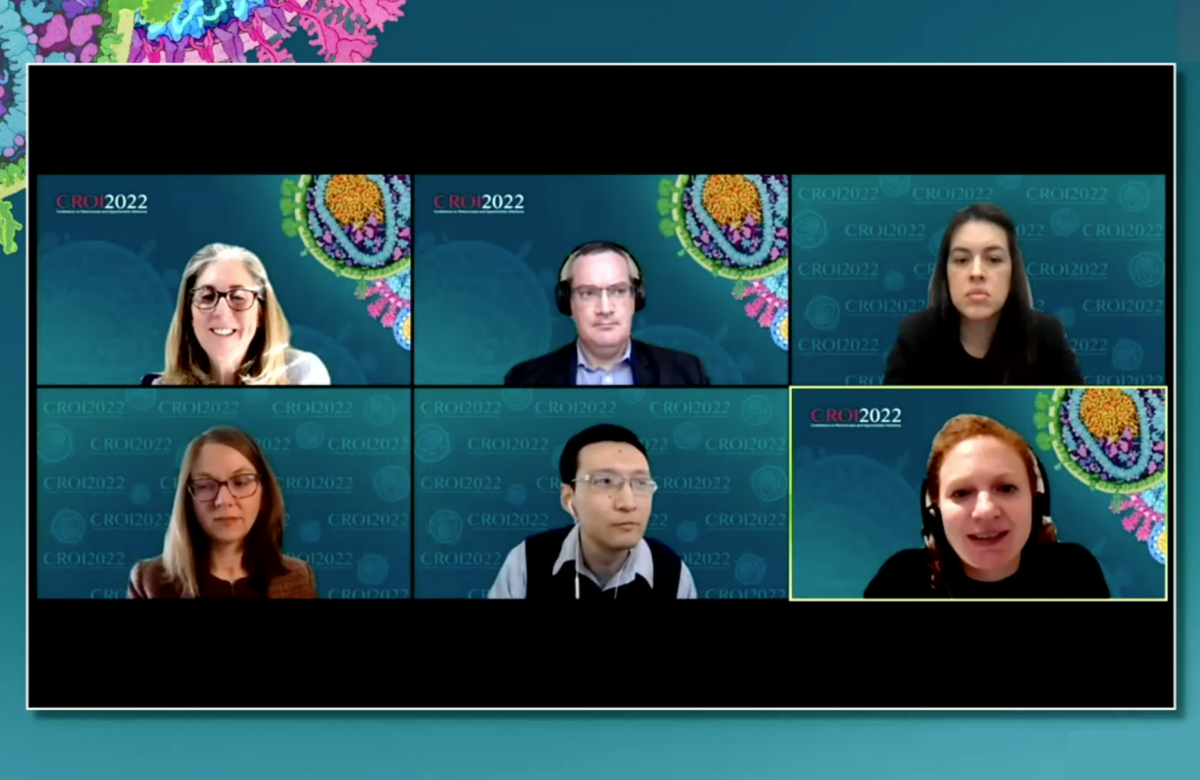Hepatitis C declining in people with HIV as access to treatment broadens

The results were presented this week to the Conference on Retroviruses and Opportunistic Infections (CROI 2022).
Current World Health Organization targets for the elimination of hepatitis C by 2030 encourage countries to aim for less than five new cases per 100,000 people and less than two new cases for every hundred people who inject drugs.
To assess progress towards the hepatitis C elimination target in people with HIV, and to investigate the impact of direct-acting antivirals on the incidence of hepatitis C, the International Collaboration on Hepatitis C Elimination in HIV Cohorts pooled data on 105,402 people in ten cohorts in France, Spain, Switzerland, the Netherlands and Australia.
Between 2010 and 2019, 45,943 people were eligible for inclusion in the analysis because they had a baseline hepatitis C antibody test and a follow-up test, and 2051 people acquired hepatitis C during the follow-up period. Seventy-two per cent of the cohort were gay and bisexual men; only 0.4% were people who inject drugs.
Incidence was relatively stable between 2010 and 2015 but fell by 50% between 2015 and 2019, from 0.91 cases per 100 person-years of follow-up to 0.46 per 100 person-years, declining steeply as direct-acting antivirals became broadly available. The reduction was most pronounced in countries that had previously had high hepatitis C incidence in people with HIV.
HIV remission – one person off ART four years on from antibody therapy

The broadly neutralising antibody (bNAb) used in this study is called 3BNC117. It has been used before, but this may be the first study in which people were enrolled soon after acquiring HIV, perhaps limiting the reservoir of HIV-infected cells in the body.
The 59 participants were divided into four groups: 15 people given only ART (the control group); 15 given ART and two infusions of the bNAb 7 and 21 days after starting ART; 13 given ART and a latency reversing drug at 10, 17 and 24 days after starting ART; and 16 given ART and both of the two experimental medications.
One of the crucial issues in antibody therapy is that resistance mutations to them are naturally common in HIV. In the group that took the bNAb plus ART, 47% had resistance to it and in the group that took all three therapies, 37%.
While the antibody therapy directly reduced the number of actively infected CD4 cells that were producing virus, it also, in people sensitive to it, produced a considerably higher proportion of CD8 cells that were sensitive to HIV. These are the important cells that kill off virally infected cells and their ‘memory’ for HIV tails off only gradually.
Viral load declined faster in people given one or both of the experimental therapies than to ART alone. After 400 days on ART, 20 participants agreed to an analytical treatment interruption. ART was restarted either after 12 weeks, or earlier if viral load increased above 5000. Seven of the 20 participants were able to stay off ART for the full 12 weeks.
One of the participants chose to continue his analytical treatment interruption and remains off ART almost four years later. He maintains a very low viral load, detectable by ultrasensitive PCR tests, of 0.2 copies/ml. This cannot therefore be regarded as a ‘cure’ in the sense of all HIV having disappeared from his body. But it could be described as an example of long-term remission, or even of functional cure if he continues to control HIV at these low levels.
Could antibody therapy be used instead of pills for children with HIV?

Dr Roger Shapiro of Harvard Medical School conducted the study in collaboration with research institutes in the US and Botswana. The study enrolled 28 children, born with HIV in Botswana, who had all started antiretroviral therapy (ART) within seven days of birth. They were aged between 2 and 6.
In the study, the children were given a combination of two bNAbs called VRC01LS and 10-1074, initially in combination with ART, and then, if they still had an undetectable viral load, without the ART – 25 children were included at this point. The antibodies were given as intravenous infusions every four weeks.
Ten of the 25 children maintained a viral load under 40 for the 24 weeks of the study. Another child maintained viral load under 400.
Of the 14 children who did not maintain viral suppression on bNAbs, eight developed detectable viral loads within the first four weeks on bNAbs alone. All the children achieved viral re-suppression through restarting ART, although those with the highest viral loads took 19 or 20 weeks to do so. The bNAb therapy was generally well-tolerated.
Shapiro emphasised that this was only a proof-of-concept study. While studies of bNAbs given as therapy to adults have been going on for about five years, with similar results, this is the first in young children.
More focused HIV testing in PEPFAR countries yields results

The US President’s Emergency Plan for AIDS Relief (PEPFAR) changed its universal HIV testing guidelines in 2019 and shifted instead to using targeted testing for those at the highest risk of acquiring HIV. To evaluate trends in HIV testing and linkage to care, researchers analysed data from 41 PEPFAR countries for people aged 15 years and older.
There was an increase in testing from 19 million tests in March 2016 to a peak of 27 million in September 2018. However, this then decreased to 16 million tests in December 2019, following the implementation of the new PEPFAR guidelines and before the global pandemic. In June 2021, there were 15 million tests.
The percentage of positive results was stable at around 5% between March 2016 and September 2017 and decreased to 3% in March 2018. It has subsequently been stable at around 4% since December 2019.
Additionally, the number of newly diagnosed people linked to HIV treatment and care increased substantially during this period, from a low of 66% in March 2016 to 94% in June 2021.
COVID-19 raises risk of adverse birth outcomes in women with HIV

Both COVID-19 and HIV have been linked to an increased risk of adverse birth outcomes but there is limited information about their combined impact in settings with a high prevalence of HIV among women of child-bearing age. This is especially relevant for women in sub-Saharan Africa, where HIV prevalence is high and access to COVID vaccination remains limited.
Maya Jackson-Gibson of Northwestern University and colleagues analysed data from the birth outcomes surveillance system already in place in Botswana and looked at birth outcomes at 13 sites from September 2020 to November 2021.
Women were included in the study if they had a known HIV status, gave birth to a single infant and had undergone COVID-19 testing between 14 days prior to delivery and up to three days after delivery. During the study period 11,483 women were tested for COVID-19, 539 tested positive (4.7%) and of these, 144 were living with HIV.
Adverse birth outcomes occurred more frequently in all women who tested positive for COVID-19 (31%) than those who did not (26%). They were substantially higher in women with HIV who tested positive for COVID-19 (43%) than HIV-positive women without COVID-19 (30%).
After adjustment for age, women with HIV and COVID-19 had a 78% higher risk of any adverse birth outcome, a 65% higher risk of a severe birth outcome, twice the risk of pre-term delivery or very pre-term delivery and a 65% higher risk of having a small-for-gestational age infant. COVID-19 status did not affect the risk of stillbirth or neonatal death.
COVID vaccination began in Botswana in late 2021 and prioritised people over 65 years old. Very few of the women who took part in this study had been vaccinated.
Anticholinergic medications associated with falls and frailty

The use of anticholinergic medications is associated with recurrent falls in people living with HIV, Dr Jessica Doctor from Guy’s and St Thomas’ Hospital in London told CROI 2022. Anticholinergics also appeared to be associated with frailty.
Anticholinergic medications are commonly prescribed to treat mental health conditions, urinary incontinence and allergies. Many medications have some degree of anticholinergic effect, blocking a chemical in the body – acetylcholine – which is involved in major functions of the nervous system. Anticholinergics have well-known side effects and in older people, their long-term use is associated with poorer age-related outcomes, including falls and frailty.
Doctor and colleagues investigated the use of these medications in ageing people with HIV.
Their study included 699 people aged over 50, living with HIV in the UK and Ireland. All the medications they were taking, other than antiretrovirals, were scored for their anticholinergic potential. Data were collected on recurrent falls and frailty (more than three criteria in a modified Fried Frailty Index: unintentional weight loss, exhaustion, low energy expenditure, low grip strength, and slow walking speed).
Participants had a median age of 57, 88% were male, 86% White and 99% were on antiretroviral therapy. Recurrent falls were reported by 9% of participants, while 21% met the frailty criteria.
Taking an anticholinergic medication was reported by 27% of participants. Those using anticholinergic drugs were more likely to report falls (17% vs 6% in non-users) and to meet the frailty criteria (32% vs 17%).
Jessica Doctor advised clinicians to be aware of the association of these drugs with falls and frailty, and stop prescriptions for them wherever possible.
Point-of-care viral load tests didn’t improve viral suppression in Kenyan children
![Dr Rena Patel (bottom right) at CROI 2022. [end of image caption]](/sites/default/files/inline-images/bulletin-perinatal-panel.png)
Rates of viral suppression remain lower among children than adults in lower-income settings and prevalence of drug resistance is high among children with HIV. This study investigated whether point-of-care viral load testing and early referral for drug resistance testing would speed up clinical decision-making resulting in improved treatment outcomes among children with HIV.
Researchers recruited two groups of children with HIV in Kenya on their first or second antiretroviral regimen: 1-9 year olds and 10-14 year olds. Participants were randomised to either receive point-of-care viral load testing every three months and drug resistance testing if they had a viral load above 1000, or the standard of care, which is viral load testing every six months and resistance testing only in the case of second-line regimen failure.
After 12 months, 90.4% of the intervention group and 91.7% of the control group had viral loads below 1000, a non-significant difference. Virologic failure was detected on 138 occasions in the intervention group. Resistance testing was successful for 89% of samples and mutations were detected in every single sample.
The study investigators think that they missed enrolling children who were most vulnerable to viral rebound into the study, as the cohort had relatively good viral suppression rates at study entry. Service improvements at the time of the study, especially the introduction of dolutegravir, may also have improved viral suppression rates. However, the study investigators also concede that viral load monitoring may not address the root causes that led to children experiencing viral rebound in the first place. Children may need more intensive support.
